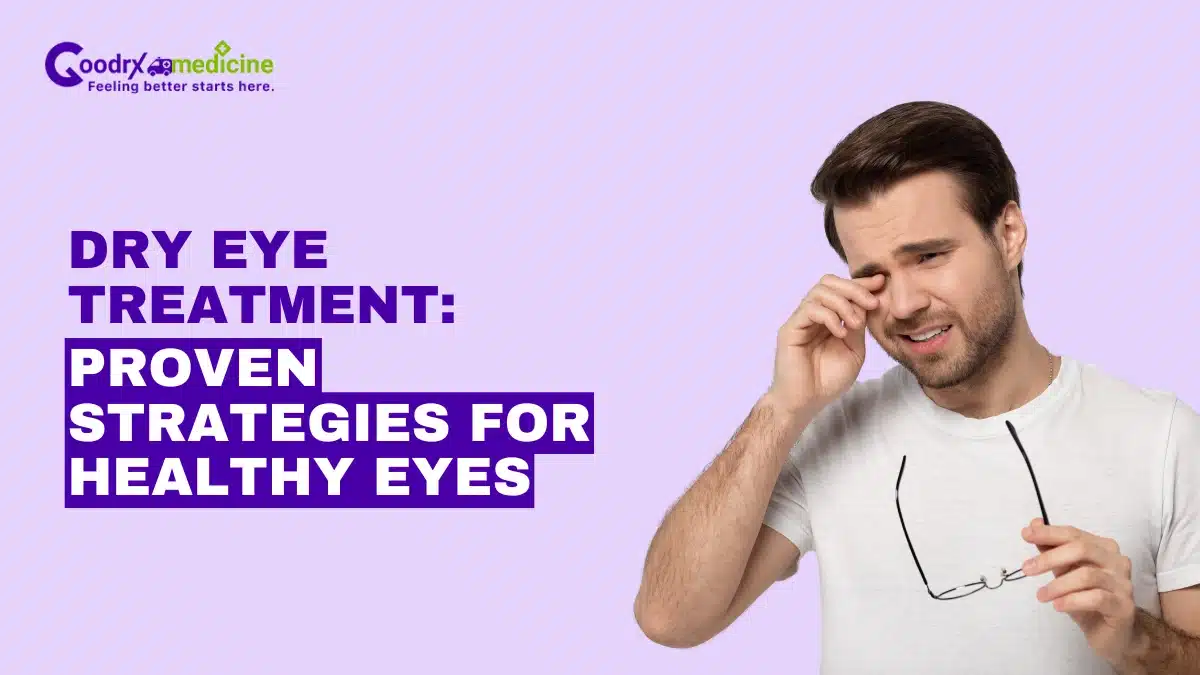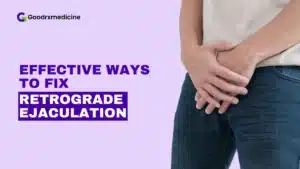Dry Eyes may sound concerning and can cause unwanted disruptions in your daily life. You may experience symptoms such as a gritty sensation or itching. This condition can become an issue when left untreated.
According to research published by The Ocular Surface in 2024, approximately 344 million individuals globally and around 20 million people in the U.S. alone are affected by Dry Eye disease. This shows that you are not alone and how common the condition is.
The key to finding relief lies in choosing effective methods that offer comfort and control the condition for the long term. Therefore, most treatment strategies are developed to reduce irritation in the eyes while increasing moisture for a long time.
This article focuses on proven treatments, including natural remedies, lifestyle changes, medicated eye drops, such as Corticosteroid eye drops, and over-the-counter drops like Artificial Tears, to help you better understand the safe options available and choose the proper treatment method for your condition.
Dry Eye treatment options and how to treat the condition
Treatment for Dry Eyes depends on how often you experience severe symptoms and what triggers them. The first aim of any treatment is to provide you with relief from symptoms and repair the natural tear film. Tear film is the watery layer that covers the surface of your eye.
When an eye care professional creates a treatment plan, it mainly includes a combination of lifestyle changes, medications like eye drop solutions, and sometimes medical procedures if the condition becomes serious. This approach helps lower inflammation and control or avoid eye damage.
Let’s read about such therapeutic products and treatment strategies in detail:
Save up to 90% on your medicine bills
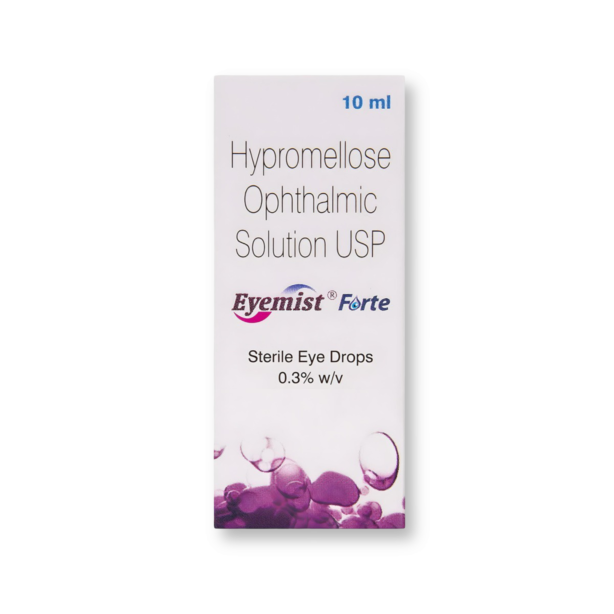
Eyemist Forte 10 ml
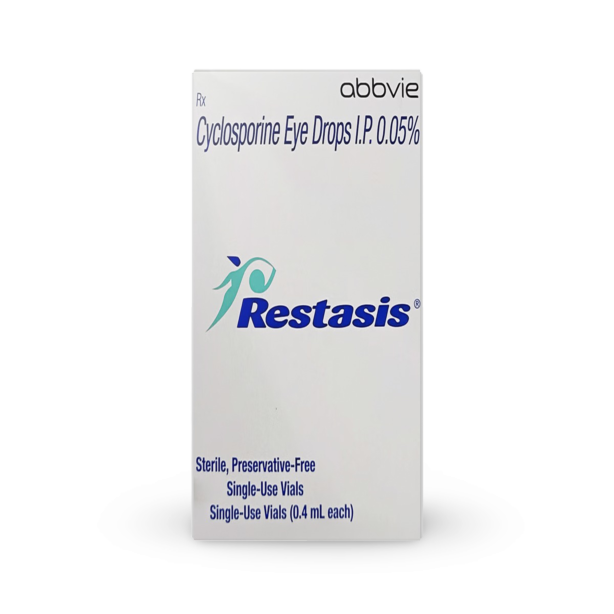
Restasis 0.05% Ophthalmic Emulsion 0.4ml
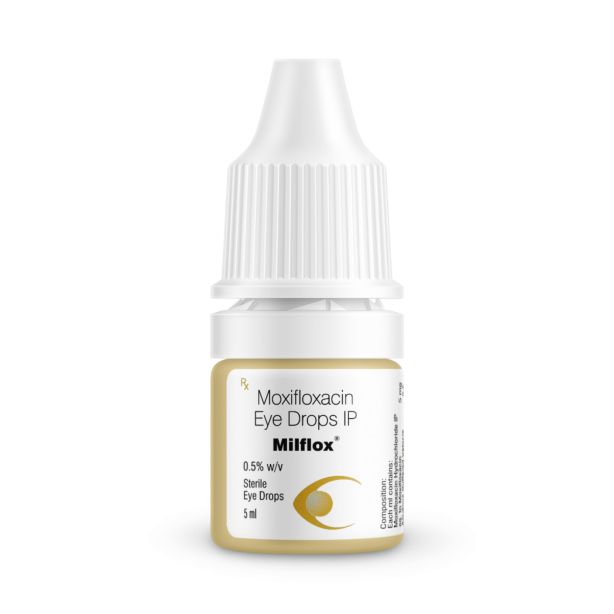
Milflox 0.5% 5 ml

Pred Forte 10 ml
Over-the-counter (OTC) eye solutions
Use OTC drops only for moderate or mild Dry Eye syndrome. You don’t need a prescription for these medications. They offer relief by acting as a supplement for natural human tears. They are available in various forms like gels, ointments, and lubricating drops like Eyemist Forte. Artificial tears are also a type of lubricating eye drop.
Here are the general points to keep in mind when purchasing an OTC medication:
- If you want to use eye drops frequently, try using a preservative-free form. Preservatives in daily-use eye drops can cause irritation or redness.
- Remember, OTC medication will not treat your inflammation; it only relieves symptoms.
- You can use these drops daily to increase eye comfort.
- Ointment and gel versions provide long-lasting lubrication and are primarily used at night to prevent the eyes from drying overnight.
- Lipid-based drops can be used if you have evaporative Dry Eye (quick drying of tears due to a lack of an oily layer). Lipids stabilize the oil layer in your eye(s).
Prescription medications
Eye drops are considered the first line of treatment. It is particularly important to use prescribed products when you feel eye irritation or inflammation. Prescription medications are helpful when artificial tears alone can not provide effective relief.
In case of prescription medication, a doctor will supervise your treatment to track progress and side effects. If you take an overdose by mistake, the doctor will monitor the complications.
Here are some of the most used Food and Drug Administration (FDA)-approved eye solutions:
Cyclosporine A drops
These drops reduce the immune system’s response to decrease inflammation and help increase tear production. Cequa and Restasis are commonly used Cyclosporine. Unlike steroidal solutions, Cyclosporine drops are safe for long-term usage without triggering the risk of Cataracts or Glaucoma.
Dosage: Use these drops twice daily. Continue the treatment for at least 4-6 months for full benefits.
Lifitegrast
This medicinal ingredient was specially developed to control the immune reactions linked with Dry Eye. It offers protection against long-term surface injury. Xiidra is one of the popular and FDA-approved brands for Lifitegrast.
Dosage: 1 drop into the eyes twice daily, with a 12-hour gap.
Autologous serum drops
These drops are used for chronic Dry Eye treatment. When standard procedures fail to offer relief, doctors recommend this medication. It is made of the patient’s blood serum and contains natural tear proteins, vitamins, and growth factors. This solution imitates the composition of real human tears.
Dosage: Generally prescribed to be used 4-6 times a day. Treatment duration is typically 3 months. But this may vary depending on the prescription.
Corticosteroid drops
These drops are mainly used for a short period. They can quickly bring severe inflammation under control. But remember not to use it for a prolonged period, as it can result in side effects. Prednisolone, Fluorometholone, Dexamethasone, and Loteprednol are some of the commonly prescribed corticosteroid medications for the eyes.
Dosage: For Prednisolone, available under the brand name Pred Forte, the dosage guideline is 1-2 drops every 1-2 hours for the initial 2 days to manage inflammation. Once inflammation decreases, the dosage is reduced to 1 drop every 4-6 hours.
Nasal sprays
This is another prescribed method that enables natural tear production. These sprays target neural reflexes in the nose. Tyrvaya is one of the FDA-approved nasal sprays.
Dosage: Use the spray twice a day, with 1 spray in each nostril. Keep a 12-hour gap between the doses.
Home remedies
Natural Dry Eye treatment, which generally includes home remedies, can enhance the impact of prescribed medications. They improve the comfort and tear quality. Let’s have a look at the list of some research-backed treatment methods that you can follow at home on your own:
- Omega-3 fatty acids: According to a research published by the Nutrition Education in Medicine in 2020, 78% eye care providers in New Zealand and Australia recommended food rich in omega-3 for Dry Eyes disease, while 62% recommended omega-3 supplements. Omega-3 is known to decrease eye inflammation and enhance the tear film’s function and quality.
- Warm compressions: Help loosen clogged oil glands. For better results, use them daily for 5-10 minutes.
- Eyelid hygiene: Clean your eyelids gently with medicated or regular wipes. This practice removes dirt and bacteria from your eyes.
- Hydration: Staying hydrated helps the natural tear production process and ensures your eyes receive the required moisture. Try drinking 8 glasses of water a day.
- Humidifiers: Installing humidifiers at home. They add moisture to the indoor air, which is usually dry due to heating or air conditioning.
- Avoid: Try limiting your screen time. Prolonged screen hours significantly reduce blinking, which leads to fast tear drying. Also, try to avoid smoking, as it releases toxins that can cause irritation in the eye, further causing dryness.
Alternatives
Here are some alternative methods that can provide relief in case nothing else works for you:
Punctual plugs
These plugs are compatible with the human body (biocompatible). They are small in size and easily inserted into the puncta. Puncta are the ducts for tear drainage, present at the inner corners of the eyelids. Plugs close the drainage opening to slow down the tear drainage. This helps retain both artificial and natural tears on the eye surface. Retention reduces dryness and increases eye lubrication, helping in the treatment of Dry Eye disease.
In-office procedures
- Thermal cauterization is the first procedure you can go for (only after medical consultation). This procedure involves the permanent closing of the tear ducts. The technique uses heat to prevent tear drainage. This procedure is used when a plug is ineffective or unsuitable for a user. According to a research published by The Journal of Cornea and External Disease in 2021, 54% of the patients reported improvement in Dry Eyes syndrome after cauterization.
- Second comes intense pulsed light therapy that opens the clogged oil glands in the eyelids and enhances their function. Oil is crucial for tear film stabilization.
Changes in lifestyle that can help with Dry Eyes
Lifestyle changes are essential for treating and managing the Dye Eye condition. You will see that simple changes can help you reduce your eye strain or tear evaporation. This will ultimately decrease symptoms. Some changes you can go for are:
- Follow the 20-20-20 rule for screen time: every 20 minutes, look 20 feet away for 20 seconds.
- Carry sunglasses outdoors to protect your eyes from dust and wind.
- Follow a balanced diet rich in vitamins E, A, and C. Vitamin A lubricates the eyes. Vitamin E protects the eye cells. Vitamin C enables eye repair.
- Make sure to have adequate sleep. It helps with eye repair.
These approaches provide a detailed strategy for controlling or reducing Dry Eye symptoms and enabling long-term eye health and comfort.
Conclusion
Dry Eye treatment can offer notable relief to individuals dealing with significant dryness of the eye surface. The proper treatment mainly depends on symptoms, personal needs, and medical supervision.
The treatment approach will primarily include prescribed eye drops and OTC drops. Moreover, home remedies and lifestyle changes can enhance the impact of therapeutic products and offer relief.
Mild cases can be controlled with OTC products, while chronic cases demand punctual plugs and other prescribed therapies to treat the syndrome effectively. Most importantly, consulting a healthcare professional will open doors for an individualized treatment strategy, enabling overall maintenance of eye health.

Frequently Asked Questions
What is the best treatment for Dry Eyes?
The best treatment will depend on the severity of your condition. If you are experiencing mild symptoms, preservative-free eye drops, such as Artificial Tears, can help restore moisture and offer comfort. For more severe symptoms, prescription eye drops like Cyclosporine will relieve you.
What is the new treatment for Dry Eyes?
The newest treatment for Dry Eyes is Acoltremon, which was made available under the brand name Tryptyr in 2025. This is a prescription-only eye drop. Other newest treatments include thermal pulsation devices, which use heat to open oil glands. Punctual plugs are also considered an innovative treatment strategy for retaining tears.
What vitamin am I lacking if I have Dry Eyes?
You may lack vitamin A or D. Vitamin A helps lubricate the eye surface and produce tears, and its deficiency causes Xerophthalmia, which also causes eye dryness. Vitamin D helps stabilize tear quality, and its deficiency can trigger eye surface inflammation.
What are the side effects of Dry Eye plugs?
Some common side effects include a scratchy or irritating sensation, watery eyes, moderate swelling, and redness. Some rare side effects that need medical intervention include punctal scarring and infection, such as Dacryocystitis, a tear sac infection.
Can Dry Eyes cause blurry vision?
Yes, Dry Eyes can result in blurry vision. This happens due to a disruption in the eye’s tear film, making it difficult for the individual to focus clearly. Blinking can improve vision for a short duration, but it might lead to light sensitivity.
Does Dry Eyes cause dizziness?
Dry Eyes do not directly trigger dizziness, but they can promote it indirectly by affecting eye comfort and vision. Symptoms of Dry Eyes, such as fluctuations in vision, can disrupt the brain’s capability to process visual information accurately.
When referencing outside resources, GoodrxMedicine always provides full citations. To learn more about the measures we use to maintain the quality of our content, please review our Content Information Policy.



